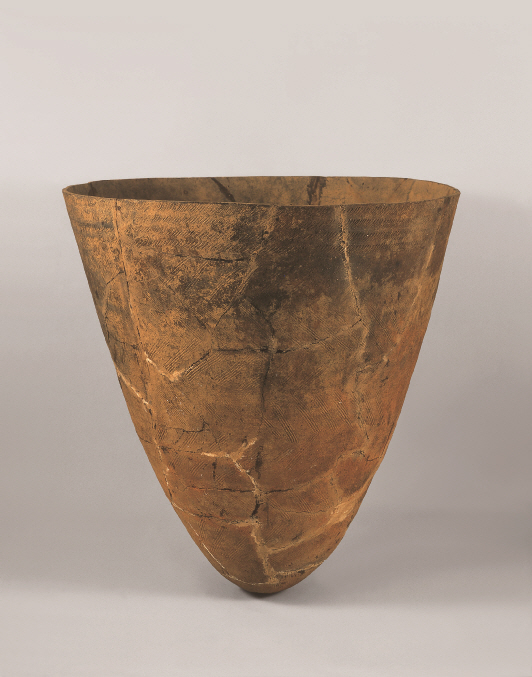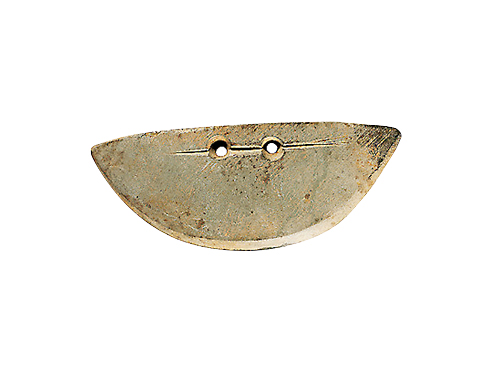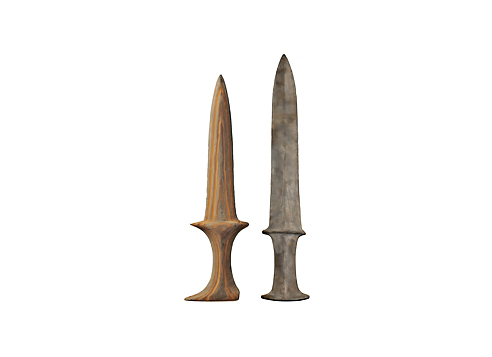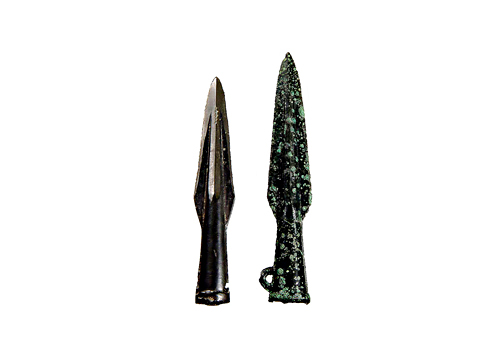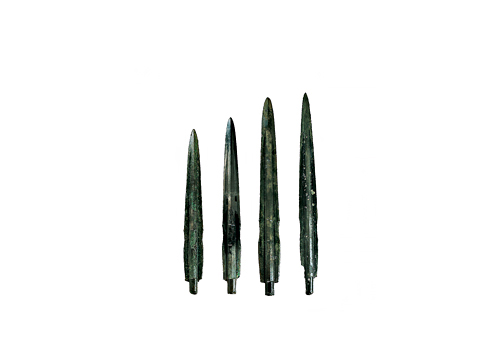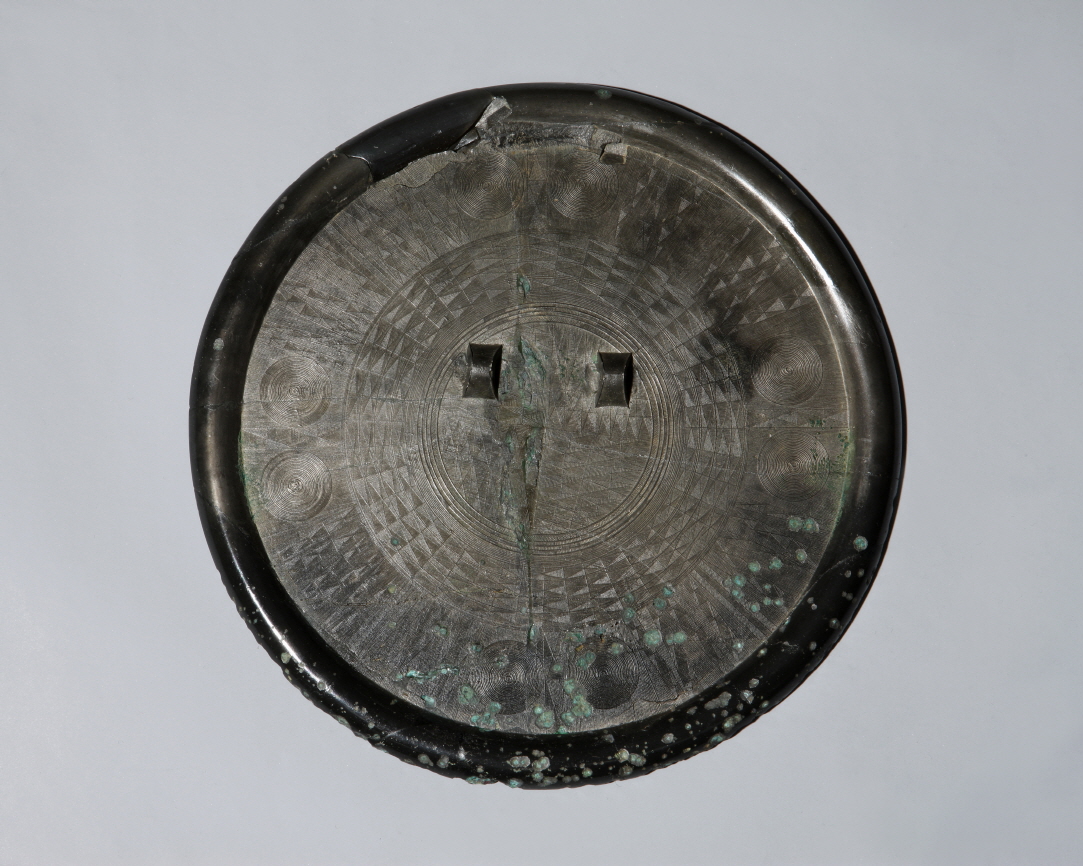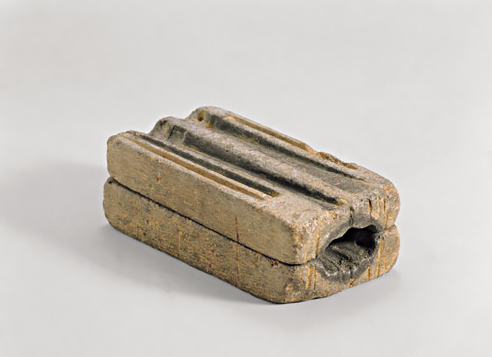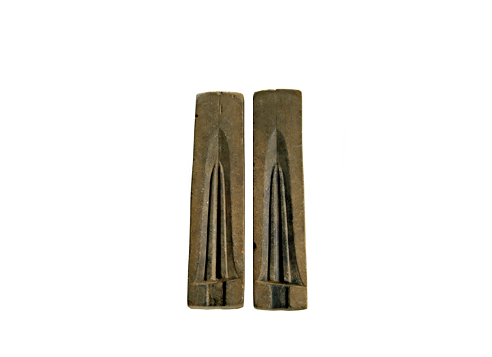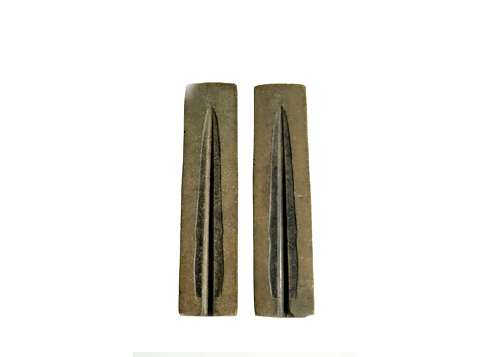The Archeological Collections Room displays some 600 artifacts inherited from Korean ancestors°™ from the Prehistoric Age to the Joseon Period°™ including earthenware, stoneware, metal ware, and glass and jade items. Arranged according to period, they provide a broad view of the nation’s cultural development.
Permanent Exhibition
-
- Exhibition
- Permanent Exhibition
- Archaeological Collections
Category Title
Earthenware and Stoneware of the Prehistoric Period
People first began to inhabit the Korean Peninsula during the Old Stone Age, hunting animals, gathering food, and producing chipped stoneware. In the New Stone Age, however, with the beginnings of primitive farming and settlement life, people began to use polished stoneware and comb-pattern pottery. Fish hooks, net weights, stone grinding pestles, saddle querns, stone axes, and other implements were all manufactured during this period. The Bronze Age saw the emergence of serious agricultural farming and rice cultivation and the development of plain coarse pottery. Rim-perforated pottery and burnished red pottery are typical of the period. Developments in stoneware enabled the manufacture of effective tools and agricultural implements, including axes and hand-axes, harvesting stone knives, arrowheads for hunting and fishing, stone daggers, and others. However, at the turn of the 1st century A.D. when Iron Age culture was introduced to the Korean Peninsula, the use of iron agricultural implements enhanced agricultural productivity while iron weapons facilitated wars of conquest, accelerating the integration between political systems and regions.
Bronze Age Culture
During the Bronze Age, productivity increased dramatically with the use of metal tools. Consequently, society divided, class divisions emerged, and religious and political rulers appeared. Bronze Age culture began on the Korean Peninsula with the use of plain pottery around 1,000 B.C., and settlements began to form around fields and hills more suited to agricultural farming. Rice farming also began; many early rice paddy remains have been discovered throughout the nation in recent times. Various types of weaponry and tools were manufactured and used, including bronze mandolin-shaped daggers, narrow-bladed bronze daggers, bronze halberds, socketed-spearheads, axes, adzes, and gravers, as well as ritual wares like bronze mirrors. Moulds were also manufactured using figure stone to manufacture bronze ware.
Bronze Daggers and Bronze Mirrors
Bronze daggers, produced alongside large numbers of bronze mirrors, were the representative symbols of Korea's Bronze Age. Korea's bronze daggers were manufactured by making the body and shaft of the dagger separately and then tanging them; this differed somewhat from the method used in China, where the body and shaft of the dagger were manufactured together. Korea's bronze daggers are categorized into mandolin-shaped bronze daggers and narrow-bladed bronze daggers. The mandolin type, which has been discovered in northeastern China and throughout the entire Korean Peninsula with the exception of the northern region, had a curved blade and functioned as a symbol of religious prestige. The narrow-bladed bronze dagger was only manufactured on the Korean Peninsula, and also functioned as a secular prestige symbol. The Korean bronze mirror features two to three knobs crowded along the edge and various geometric patterns. Made of nickel, its form shifted from that of a mirror with coarse lines to a slim linear design with the development of decorative techniques.
The slim linear design mainly featured circular and triangular patterns, which were deployed in concentric circles to express the sun.
Stone Mould for Bronze Ware
Fourteen moulds dating back to the 2nd century B.C. were unearthed in Yeongam, South Jeolla Province. Designated as National Treasure No. 231, they are representative of the stone moulds found on the peninsula. Melted metal was poured into these moulds to make daggers and a variety of other weapons and implements. This museum houses the flat rectangular parallel —piped—shaped moulds, four of which show traces of one side having been used and ten of which bear signs that both sides were used. The moulds were made of figure stone and joined face to face in pairs for casting. Burnt and blackened spots remain from the casting process. They were used to cast daggers, halberds, axes, chisels, awls, fish-hooks, mirrors, gravers, and ritual wares. These precious artifacts offer a glimpse at the manufacturing process of ancient Korean bronze ware.
